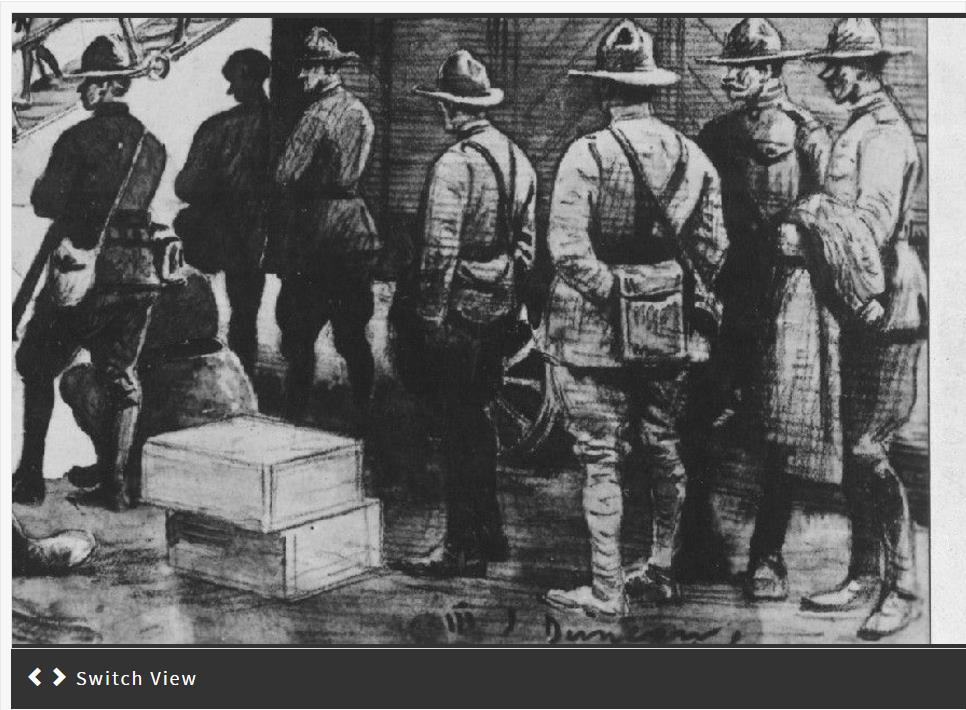This activity introduces students to the way art was used to portray the experience of soldiers serving in the Allied Expeditionary Forces in France during World War I. Students will first react to a portion of a larger drawing of newly arrived troops debarking. They will then see the full image and answer questions that will form the basis for a class discussion about the experience of soldiers fighting during WWI and the use of propaganda to influence Americans on the homefront.
Suggested Teaching Instructions
Use this activity while teaching about World War One, propaganda, artistic interpretation, or historiography. It can help students consider why, in an age when photography could capture battlefield images, the Army agreed to having artists create drawings and paintings, and how art preserves the moment differently than photography. For grades 8–12. Approximate time needed is 30 minutes.
Provide students with background information as necessary:
Walter Jack Duncan, the artist who created the pen and ink drawing, “Newly Arrived Troops Debarking at Brest,” was one of eight artists commissioned by the U.S. army to document the experience of troops serving in France during the war. These artists were employed by the Committee for Public Information, created by President Woodrow Wilson’s Executive Order in 1917 to influence the American public to support the war effort. For background on the official duties of the artists see “
Memo to Artists with Official Duties.” (Find more
information on the Committee for Public Information and
images of some of the artwork on the U.S. Army Center of Military History’s website. Read about the artists employed by the U.S. Government’s Committee for Public Information on the
National Archives blog “The Unwritten Record.”) Duncan spent most of his time in France following supply lines and troop debarkation at ports of entry, especially Brest. It is likely that the troops debarked in this image were from the 36th Division, originally out of Texas and Oklahoma.
Direct students to begin the activity in pairs or small groups. They will see only a small section of the larger drawing at first, and should answer the accompanying four discussion questions in 5-10 minutes.
After a brief class discussion, move the groups on to the full image and follow-up questions they will see after clicking “When You're Done”:
- The soldiers’ names are being recorded as they debark (leave the ship). Why might this be important?
- Photography was in wide use by 1918. Why do you think the military sent artists to Europe to cover the war in addition to photographers?
After approximately 10 minutes of consideration, conduct a class discussion using the following prompts:
- These are newly arrived U.S. troops. What mood was Duncan trying to capture in this drawing?
- Why do you think he spent time at this spot instead of moving onto other places?
- This is one of many U.S. ships that arrived carrying troops. How does this help you to understand the magnitude of the military deployed to France?
- How do you think your impressions of these troops and the war would be different if this was a photograph instead of a drawing?





